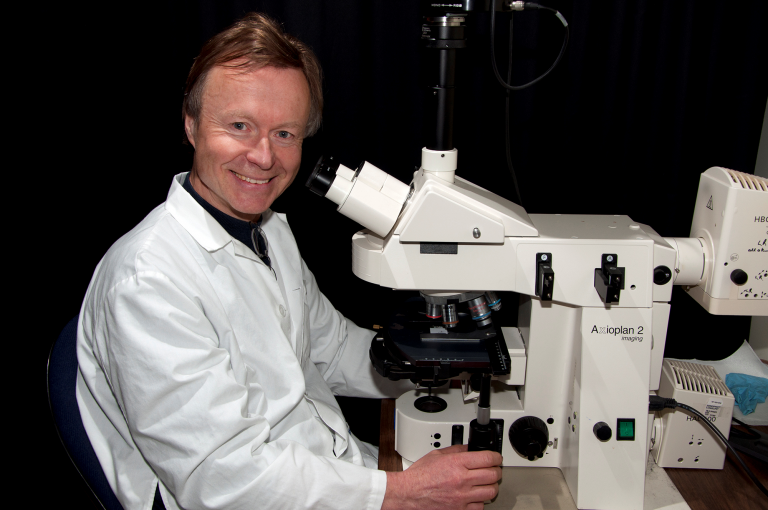Mouse study may inform new strategies to treat spinal cord injury in older adults
As mice age, they lose the ability to regenerate nerve fibres in the spinal cord, a finding that has implications for an increasingly active population of seniors.
The discovery, by researchers in the UBC Faculty of Medicine and the University of California, San Diego School of Medicine, is the first effort to gauge the impact that age has on regeneration of nerve fibres, or axons, in the central nervous system.
“The important implication is that in our fight against paralysis, we ought to think about how to overcome the increased challenges in promoting repair and recovery in older individuals as well,” said co-senior author Wolfram Tetzlaff, a Professor in the UBC Department of Surgery and the Department of Zoology and Director of the International Collaboration On Repair Discoveries (ICORD), the spinal cord injury research center of UBC and Vancouver Coastal Health Research Institute.
The study, published March 31 in Cell Reports, involved knocking out the Pten gene in the neurons of both young and old mice (up to 18 months old), a molecular manipulation known to promote regeneration in young adult mammals. Pten deletion in neurons of older mice, as with younger mice, elicited the types of post-injury cellular responses that often indicate increased regeneration. But the axons in older mice were far less able to regenerate past the injury site, which would be required for any functional gains. In addition, older mice had increased signs of inflammation and other changes at injury sites, as compared to younger mice. These changes indicate that axons in older mice face a more difficult environment for regeneration.
“In older adults, axons are traveling through what is more like rocky, unpaved roads rather than smooth highways — it takes a lot more effort,” said senior author Binhai Zheng, an Associate Professor of Neurosciences at UC San Diego School of Medicine.
From these observations, the researchers concluded that advancing age is associated with a further decline in the mammalian central nervous system’s ability to regenerate axons. The team studied two different types of neurons and the results were similar.
“The fact that our two labs worked on different types of neurons initially not knowing each other’s work, but in the end converged on the same conclusion bodes well for the general applicability of these findings,” said Dr. Tetzlaff, the John and Penny Ryan BC Leadership Chair in Spinal Cord Research.
Since current regeneration studies are mostly conducted in young adult animals, the researchers say the new study also underscores the need to validate research findings in older animals.
“We were surprised to learn just how quickly our central nervous system declines in its regenerative ability as we age,” Zheng said. “These results suggest that this came much earlier than expected if regeneration were to decline at the same pace as the normal aging process. In other words, middle-aged adults, the peak age group for people living with a paralyzing spinal cord injury today, already have a significantly reduced ability to regenerate, as compared to young adults. It would be interesting to determine if the molecular machineries for neural regeneration and normal aging interact.”
Next the researchers say they will look for ways to counteract this age-associated decline in regeneration by boosting neurons’ natural regeneration programs, as well as by modifying the terrain in which axons regenerate.
This research was funded, in part, by the National Institutes of Health, the California Institute for Regenerative Medicine, the Canadian Institutes of Health Research, the Wings for Life Foundation, the International Spinal Research Trust, and the Craig H. Neilsen Foundation.
